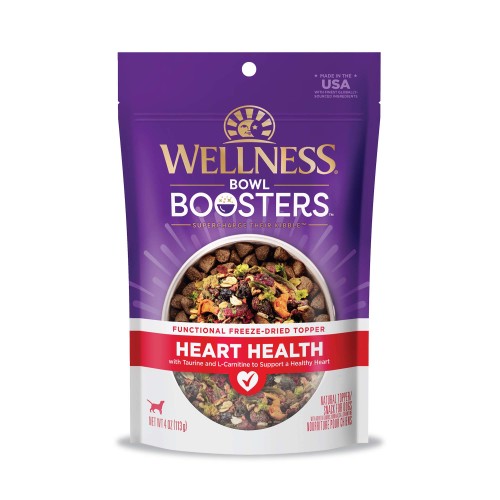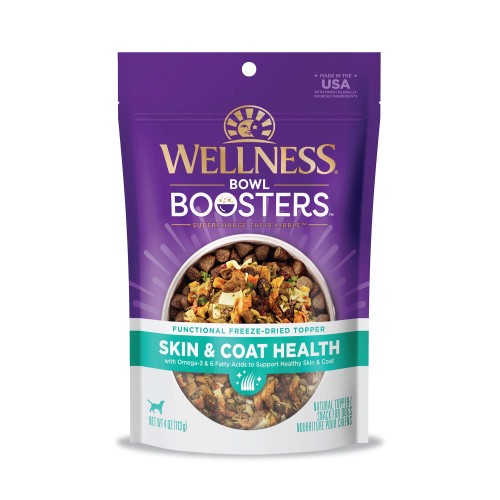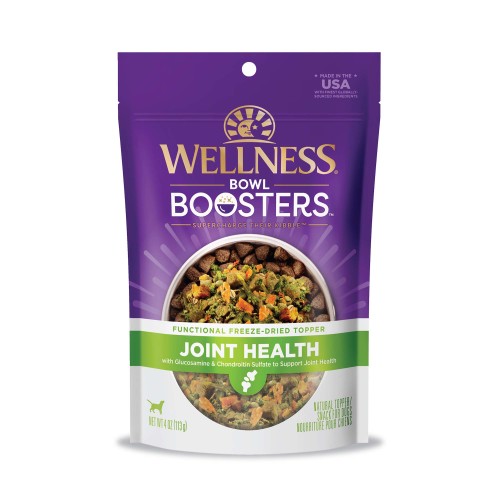January 13, 2025
Winter Dog Safety Tips
How to Best Protect Your Dog in Cold Weather
Winter is here! With it, comes several winter pet safety tips. Because as much as your dog may love the cold and snow, a cold dog isn’t always a happy dog for long. So let’s keep those snow pups safe, happy, and healthy as the days get shorter and the temperatures keep dropping with a few important winter tips for dogs.
1. Bundle Up
With all that hair, it’s natural to wonder, “Do dogs get cold?!” But, yes, just like humans, dogs in winter and especially dogs in snow can get chilly. It’s best to avoid shaving your dog’s winter coat (of hair, that is!) for the best possible cold weather pet care. Breeds with shorter coats, no undercoat, and smaller dogs may be even more susceptible to the cold and wind.
Because of that, you may want to consider investing in a dog winter coat (the jacket kind) that blocks the wind and helps your dog conserve heat if you plan to spend long periods of time outside. Make sure your pup’s jacket covers their entire back and fits snugly without obstructing their movement for the ultimate winter dog safety. Loose jackets or low-hanging straps can get tangled around your dog’s legs while running or snagged on objects, such as branches, during your walks or winter sports with your dog—so finding the right fit for your pet is important.
2. Stay Visible
Another winter dog walking tip: Shorter days can also mean walks might sometimes happen in the dark. While it’s still important to exercise dogs in winter, you just need to do so with your and your dog’s safety in mind. To keep you both safe and visible, consider reflective vests or jackets, collars, and leashes, as well as light-up collars and high-visibility colors like orange or yellow. And don’t forget a flashlight or headlamp when heading out before sunrise or sunset!
3. Protect Your Pup’s Paws
What about protecting dog’s paws from cold weather? Snow and ice can be especially hard on your pup’s paw pads. Freezing temperatures can cause pain and frostbite on paws, and chemical de-icers commonly used on sidewalks can even lead to chemical burns.
After walking dogs in snow, be sure to wipe off your dog’s paws to remove any remaining snow or sidewalk chemicals, and to prevent them from ingesting any of these chemicals when later licking their paws. You can also use a wax-based, pet-safe paw-balm or booties to help protect your dog’s paws from cold weather, sharp ice, and chemicals.
Before investing in boots for your dog this winter, be sure to properly measure your dog’s paws to ensure their feet and movement are not constricted. Slowly introduce your dog to wearing booties using lots of treats (like Old Mother Hubbard® Winter Fun P-Nuttier® Oven-Baked Dog Biscuits) and gradually increasing the amount of time they wear them. Any time the booties are on, be sure to monitor your pet’s feet for discomfort or areas that are rubbing.
4. Don’t Slip Up
The combination of winter and dogs also comes with ice, mud, and other slippery surfaces that can increase the risk of your dog slipping and injuring themselves. For your dog’s safety, keep them leashed to prevent the risk of slipping and avoid any winter sports with dogs, such as fetch, that involve running combined with abrupt stops and sharp turns.
5. Shorten Times Outside
During extreme cold, it’s important to limit outdoor activity to best protect your dog from cold weather. Also be mindful of signs that your pet may be getting too cold, such as shivering, lifting their paws, or trying to go back inside. Shorter times outside and keeping a watchful eye are some of the best frostbite prevention for dogs!
When you are outside, steer your dog clear of frozen lakes, rivers, and ponds. Thin ice may not support their weight, making it very dangerous for an unintended polar plunge.
And while it is essential to keep outdoor time to a minimum if your pet is unable to safely be outside, exercising your dog in winter is still important for their physical and mental health. Playing with your pet inside, providing them with safe things to chew, training, and working through puzzle toys (like the top meal time Christmas gift for dogs) can all help keep your pet satisfied during times that require shorter walks.
6. Provide a Warm Shelter
If you’ve got a dog that likes spending time outside in the cold, the best winter pet safety tip is to provide them with a warm, dry shelter, such as a heated dog house for winter or an insulated dog bed. Make sure the house or bed is off the ground to avoid cold or wet surfaces. Heated crate pads are also great to place under crates to keep the chill off during the winter. Outdoor water sources need to be non-frozen, so heated water containers are important, too.
7. Avoid Antifreeze
One thing that does not mix well with winter and dogs: antifreeze! While antifreeze is an important part of cold weather car care, it’s really important when it comes to cold weather pet care that you keep it away from your dog. Antifreeze can be deadly if ingested by pets, so be sure to store it out of reach, and be vigilant about spills and leaks. Better yet, go with a pet-friendly antifreeze product for the utmost winter dog safety.
8. Supplement As Needed
Last but certainly not least on the winter tips for dogs front, adjustments in your furry friend’s diet may also be necessary during the winter months due to decreased physical activity. For instance, it may be a good idea to reduce the amount of treats your dog receives—or you may set some of your dog’s daily diet aside as a treat instead of giving extra food. You might also want to consider adding Wellness® Supplements to their healthy daily regimen—Move, Shine, and Shield are all great choices for this time of year when decreased activity, dry skin, and flu season are more often in the forecast.
If you notice your pup putting on weight, consult your veterinarian about switching to a diet that is lower in calories for your dog in winter. Keeping your dog lean is the best way to maximize their longevity and joint health, so keeping them in good body condition all year round is something your canine companion will thank you for long after the snow has melted!
Here’s to a Safe, Wonderful Winter With Your Dog!
Snow or no snow, if your winters are cold, it’s especially important to practice winter safety with your dog and protect your dog in cold weather. We hope these winter tips for dogs, from bundling up in cute and cozy jackets to supplementing with a little extra tasty support, will help you keep your puppy pal healthy and happy no matter what Mother Nature has in store.





